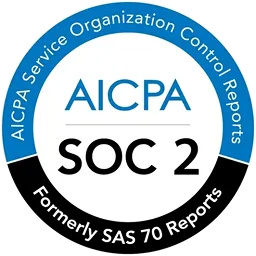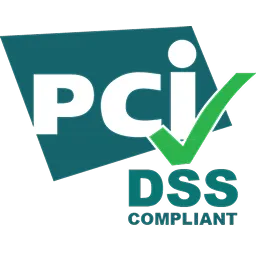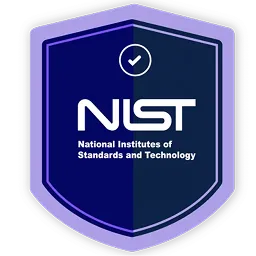Group sprawl is the uncontrolled and unplanned growth of groups or teams within an organization's digital workspace. It often happens on platforms such as Office 365 and Microsoft Teams.
Numerous teams without a clear purpose cause various discrepancies. Read on to find out how this issue can be addressed!
When teams or departments create their own groups separately, without coordination, it leads to many disconnected and sometimes useless groups. This is what we call Group Sprawl. This lack of governance leads to confusion, ownership issues, and security risks.
For example, imagine an organization using Microsoft Teams for project collaboration. Different departments or project teams, each with the freedom to create their own Teams or groups, start doing so without considering the broader organizational structure or goals. As a result, you may end up with many Teams, many of which serve similar purposes or have unclear objectives.
In this article, we will cover all aspects of group sprawl and how you can mitigate it.
Group Sprawl: An Overview
The ease of creating and deploying new Teams, facilitated by Microsoft Teams, 365 Groups, and SharePoint, significantly contributes to group sprawl.
With remote work on the rise and increased reliance on collaboration tools, teams can create groups without involving central IT. While this speeds up adoption, it also results in losing control over new Team creation, potentially leading to thousands of scattered groups across organizational tenants.
Further, managing numerous groups poses challenges for a company's secure growth. Although linking group memberships with IT ticketing enhances productivity, it overlooks crucial factors in access control decisions, each carrying significant security implications:-
- Role: Determining who should have access.
- Process: Defining how access is granted.
- Scope: Deciding the appropriate level and duration of access.
- Justification: Understanding why access should be given.
Consequently, IT teams struggle to comprehend the reasons behind specific group creations and associated access rights, hindering the establishment of efficient group management processes.
Which Factors Contribute to Group Sprawl?
Let's delve into why group sprawl happens, uncovering what causes teams to grow out of control, and highlighting key factors in different digital platforms.
- Self-Service Provisioning: SaaS applications often offer self-service provisioning, allowing users to create groups or teams without strict administrative oversight. This can lead to an abundance of groups being created for various purposes without proper organization or management.
- Lack of Governance Policies: Inadequate governance policies can result in unchecked creation and proliferation of groups. Without clear guidelines on when and how to create groups, users may create them unnecessarily or inconsistently.
- Organizational Structure Changes: Changes in organizational structure, such as mergers, acquisitions, or departmental reorganizations, can lead to the creation of numerous new groups or the duplication of existing ones, contributing to sprawl.
- Shadow IT: Users may use unauthorized SaaS applications or create groups in unsanctioned platforms to fulfill their needs, bypassing official channels. This can exacerbate group sprawl by scattering collaboration efforts across multiple platforms.
- Lack of Visibility and Control: Limited visibility into existing groups and their purposes and insufficient control mechanisms can make it difficult for administrators to manage and govern groups effectively. This lack of oversight can contribute to sprawl.
- Underutilization of Features: Users may create multiple groups for similar purposes due to unawareness or underutilization of features within the SaaS application that could fulfill their needs within existing groups.
- User Behavior and Preferences: Individual user preferences or habits, such as creating new groups for each project or task, can also contribute to group sprawl if not aligned with organizational standards or best practices.
To address group sprawl in SaaS environments, organizations should establish clear governance policies, provide adequate training and support for users, implement robust administrative controls, regularly review and rationalize existing groups, and leverage automation where possible to streamline group management processes.
Consequences of Group Sprawl
Group sprawl within Office 365 and Microsoft Teams environments can have significant and diverse effects. As numerous teams multiply without clear purposes or coordination, various challenges arise, impacting the overall efficiency and organization of the digital workspace.
- Cluttered Digital Workspace: Group sprawl leads to a cluttered and disorganized digital workspace. With a multitude of teams created independently, finding relevant information becomes challenging, and users may struggle to navigate through the myriad of groups.
- Inefficient Information Management: The abundance of purposeless groups makes it difficult to manage information effectively. Resources and discussions are spread across various teams, hindering collaboration and creating silos of information.
- Ownership Ambiguity: With teams created in an ad-hoc manner, ownership becomes ambiguous. It may be unclear who is responsible for each group, leading to challenges in decision-making, accountability, and overall team management.
- Security Vulnerabilities: Lack of governance in group creation poses security risks. Unmonitored and redundant groups may become potential points of vulnerability, as sensitive information may not be adequately protected or controlled.
Addressing group sprawl requires effective group management strategies, clear team creation guidelines, and a collaborative culture aligned with organizational goals. By doing so, organizations can enhance the efficiency, organization, and security of their Office 365 and Microsoft Teams environments.
What Does a Case of Teams Sprawl/ Office 365 Group Sprawl Look Like?
In the context of Office 365, Teams Sprawl or Office 365 Group Sprawl refers to a situation where teams or groups are created and spread without adequate oversight and management. This unchecked growth can result in various visible and underlying issues within the digital workspace.
Visible Signs:
- Numerous Redundant Groups: A clear indicator is the presence of numerous groups that serve similar purposes or have unclear objectives, leading to redundancy and confusion among users.
- Unorganized Digital Landscape: Teams or groups may lack clear organization, making it challenging for users to navigate and find relevant information. The digital workspace becomes cluttered and disorganized.
- Ownership Ambiguity: Identifying the owners or administrators of specific groups becomes difficult, contributing to confusion about responsibilities and decision-making.
Underlying Consequences:
- Information Silos: The sprawl leads to the creation of silos, hindering seamless collaboration and information sharing across the organization.
- Security Risks: Unmanaged groups may pose security vulnerabilities, as there is a lack of control over who has access to sensitive information, potentially exposing the organization to data breaches.
- Reduced Productivity: With an abundance of groups, users may struggle to find the right platform for collaboration, leading to reduced productivity and efficiency.
Strategies To Identify & Mitigate Office 365 Groups Sprawl
Let's explore these strategies that help organizations effectively manage the challenges associated with MS Teams or Office 365 Groups sprawl.
1. Implement Governance Policies
Establish and enforce clear governance policies delineating precise guidelines for the creation and management of groups within the Office 365 environment. These policies serve as a foundational framework, ensuring consistency, compliance, and purposeful group creation aligned with organizational objectives.
2. Conduct Regular Audits to Optimize
Conduct periodic and thorough audits to assess the landscape of Office 365 groups or MS Teams. This involves identifying redundant or underutilized groups, enabling organizations to make informed decisions about consolidation or removal. Regular audits contribute to the optimization of the digital workspace, minimizing the risk of sprawl and enhancing overall efficiency.
3. Leverage Automation Tools for Efficiency
Integrate automation tools to streamline the entire lifecycle of group creation, management, and monitoring. Automation ensures consistent application of governance policies, reduces manual workload, and enhances overall efficiency. These third-party tools contribute to a more organized and controlled environment, minimizing the risk of unmanaged group proliferation.
4. Implement Centralized Management of Access Requests
Establish a centralized system for managing access requests, responsible for reviewing and approving requests for group creation. This proactive approach prevents spontaneous and uncontrolled growth by requiring a structured approval process. Centralized management ensures that new groups align with organizational objectives and contribute meaningfully to collaboration without unnecessary redundancy.
By proactively implementing these multifaceted strategies, organizations can identify and mitigate the challenges associated with Office 365 Groups or Microsoft Teams sprawl. This comprehensive approach fosters a digitally organized, secure, and purposeful collaborative environment within the Office 365 ecosystem. Ultimately, it enhances productivity and reduces potential risks.
Mitigate Group Sprawl with Effective Access Management
In conclusion, organizations can effectively locate and manage inactive Office 365 groups or Teams by following the above-given methods. Further, if you’re looking for a well-organized, secure, and responsive access environment, Zluri is right here.
Zluri offers a unified access management solution designed for the modern enterprise. It serves as a singular platform that seamlessly consolidates access control across the entire user lifecycle, encompassing shadow applications.
Its access control solution empowers organizations to control group sprawl by offering centralized access management, policy-based controls, granular access permissions, automated workflows, and real-time visibility. This comprehensive approach ensures efficient access management and strengthens security protocols and regulatory compliance.






.png)


.svg)














